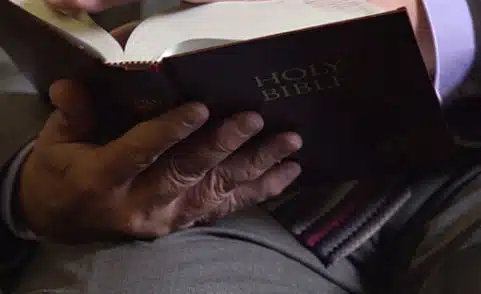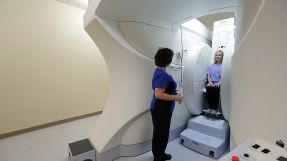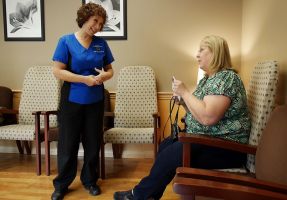
An MRI Helps Return This Pastor To His Pulpit
Posted In: MRI

In a week, RAYUS technologist Leslie Young takes dozens of people through MRI procedures. For some, the confined space inside the MR tunnel can make a doctor-ordered procedure impossible to complete. Panic can bring a traditional MR scan to a halt. “Hands on the side of the machine, get me out of here, crying,”that’s the point Leslie says the imaging stops and she starts talking to her patients about the Open Upright MRI.
If you live in the Pacific Northwest, Open Upright scanners aren’t easy to find. Patients travel thousands of miles to the Seattle area, from as far away as Hawaii and Alaska, to get an Open Upright scan at RAYUS’s Renton center. “The Upright is best for patients who are claustrophobic and they may have tried a traditional open magnet, where things are normally over their face and they’re not able to lay down,” explains RAYUS’s Renton center manager Desiree Rocovich. “We can get patients through this, usually without sedation.”
The seat of the Open Upright MRI is about the width of an airplane seat. There’s not a lot of wiggle room. But if you’re worried about something in front of your face, the Open Upright scanner offers an open view of the room. “I’ve heard from patients before, ‘Can I get out if I need to?’ Absolutely. You can walk right out of it. There’s nothing that holds them down,” says Leslie. Getting images from an Open Upright scan may take a little longer than a traditional MRI, but because of the open architecture, patients can watch TV or listen to music to help the time pass.

RAYUS radiologist Ranjeet Singh, M.D. specializes in spine imaging for people with musculoskeletal disorders. He spends his days analyzing spines, looking at discs and joints and nerves. “One of the problems of a conventional MRI is the patients are lying on their back in a recumbent position,” Singh explains. “Oftentimes the patient’s pain is when they’re standing or sitting, but if they’re lying on their back, they may not be in pain.” The Open Upright MRI gives him the unique ability to image the patient in the position where they are experiencing the pain.
Those who rely on the Open Upright MRI to take a look inside bodies say the only downside is the magnet. The strength of a magnetic field is measured in tesla after the scientist Nikola Tesla. A traditional MR scanner has the strongest MRI magnet available, a 1.5 to 3.0 tesla magnet. The Open Upright MRI has a 0.6 tesla magnet. When it comes to getting images, Leslie says the advantages of the Open Upright scanner far outweigh the weaker magnet. “If you’re going to do an Upright at a 0.6 or nothing at all because they’re super claustrophobic, then all of a sudden that 0.6 is gorgeous because it’s that or nothing.”
To compensate for the weaker magnet, procedures can take longer in an Open Upright MRI. A lumbar spine scan might take 20 minutes with a traditional MRI. To get images with comparable clarity and quality, the same scan could take 40-45 minutes in an Open Upright scanner.

